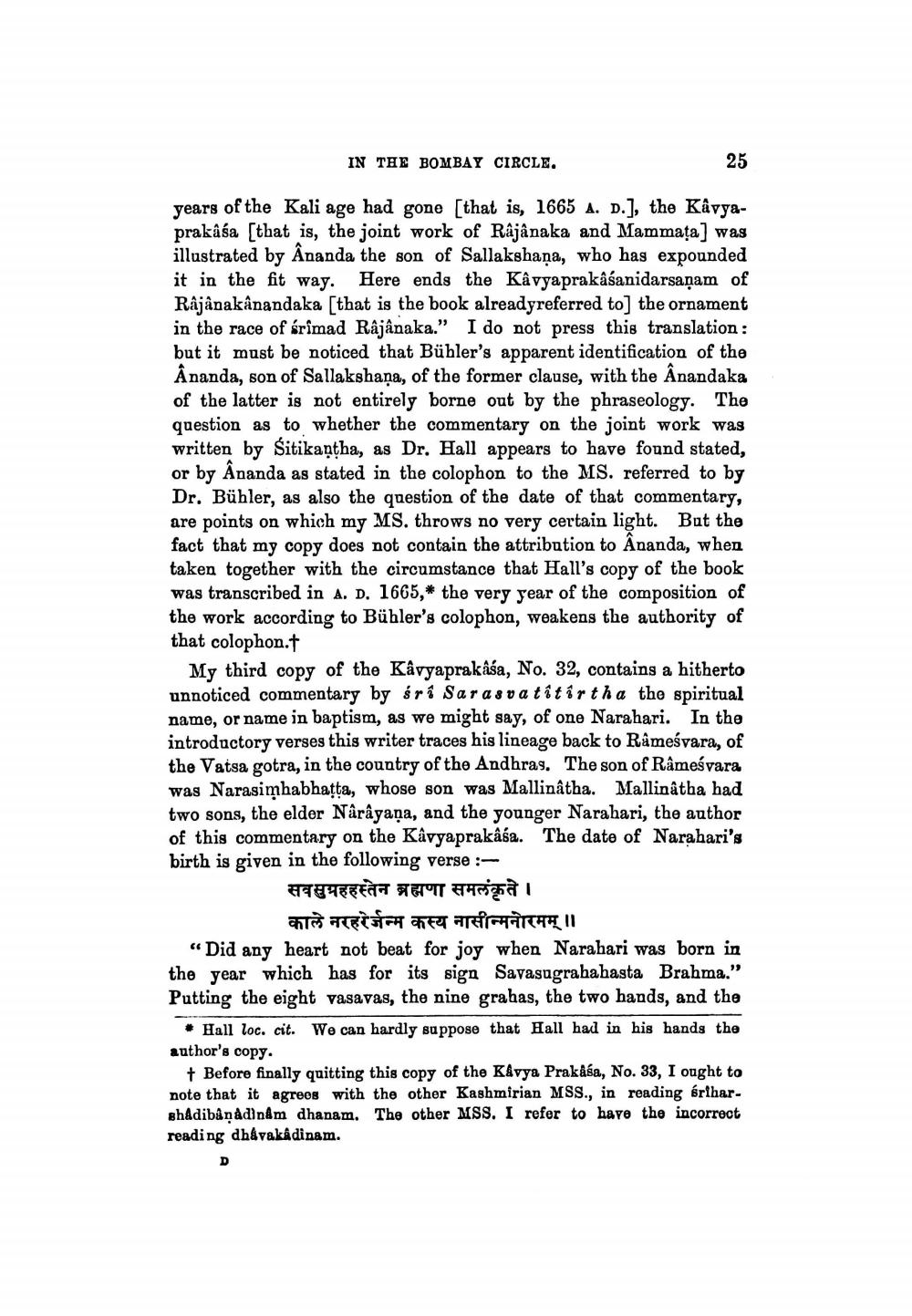________________
IN THE BOMBAY CIRCLE.
25
years of the Kali age had gone that is, 1665 A. D.], the Kavyaprakasa (that is, the joint work of Rajânaka and Mammata) was illustrated by Ananda the son of Sallakshana, who has expounded it in the fit way. Here ends the Kâvyaprakaśanidarsaņam of Râjânakânandaka [that is the book alreadyreferred to the ornament in the race of srimad Râjânaka." I do not press this translation: but it must be noticed that Bühler's apparent identification of the Ananda, son of Sallakshaņa, of the former clause, with the Anandaka of the latter is not entirely borne out by the phraseology. The question as to whether the commentary on the joint work was written by Sitikaạtha, as Dr. Hall appears to have found stated, or by Ananda as stated in the colophon to the MS. referred to by Dr. Bühler, as also the question of the date of that commentary, are points on which my MS. throws no very certain light. But the fact that my copy does not contain the attribution to Ânanda, when taken together with the circumstance that Hall's copy of the book was transcribed in A. D. 1665,* the very year of the composition of the work according to Bühler's colophon, weakens the authority of that colophon.t
My third copy of the Kâvyaprakása, No. 32, contains a hitherto unnoticed commentary by śri Sarasvatitir tha the spiritual name, or name in baptism, as we might say, of one Narahari. In the introductory verses this writer traces his lineage back to Râmeśvara, of the Vatsa gotra, in the country of the Andhras. The son of Râmeśvara was Narasimhabhatta, whose son was Mallinâtha. Mallinâtha had two sons, the elder Nârâyaņa, and the younger Narahari, the author of this commentary on the Kâvyaprakâša. The date of Narahari's birth is given in the following verse :
सवसुग्रहहस्तेन ब्रह्मणा समलंकृते ।
काले नरहरेर्जन्म कस्य नासीन्मनोरमम् ।। “Did any heart not beat for joy when Narahari was born in the year which has for its siga Savasugrahabasta Brahma." Putting the eight vasavas, the nine grahas, the two hands, and the
• Hall loc. cit. We can hardly suppose that Hall had in his hands the author's copy.
+ Before finally quitting this copy of the Kavya Prakåsa, No. 33, I ought to note that it agrees with the other Kashmirian MSS., in reading sriharghadibånadinám dhanam. The other MSS. I refer to have the incorrect reading dh&vakâdinam.




